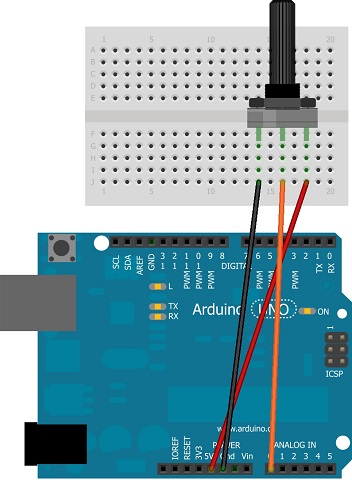In this article, we will realize a project with Arduino. Specifically, we will make a steering wheel that simulates a joystick.
It's like a controller that you can use on Steam (digital rights management, multi-player and communication mode). I thought to run this project is a passionate racing, always playing with the keyboard or with a joystick it was always the same as I went on amazon to compare a driving simulator but prices were a bit high. I've been a couple of days where I had fun. If you have any suggestions on how to improve this project, do not hesitate to contact me !!!
Are you coming to turn Arduino into a controller?The article plans to flash the Arduino communication chip to make it recognizable as a USB gamepad. The procedure is safe and reversible but I do not under any circumstances assume any responsibility in case of problems or malfunctions.
First download the latest version of UnoJoy, a library that thanks to a special firmware will turn into a device detectable as a USB joystick. To use UnoJoy you first need to install the appropriate drivers by running the InstallUnoJoyDrivers.bat file that you find in the folder you just downloaded.
We also need to install the ATmel FLIP tool that is used by our "UnoJoy" library in order to flash the firmware on the Arduino communication chip.
Are you going to load the firmware on Arduino?First, put Arduino in DFU (Device Firmware Update) mode by stepping between the two pins further ahead of the group of six protruding pins that are next to the USB socket (you can see the two pins in the picture) in this way we have flashed the firmware on Arduino. By making a contact between the two pins the various Arduino LEDs will light up briefly. Now you have to run the file of UnoJoy TurnIntoAJoystick.bat, and after disconnecting and reconnecting an Arduino computer, it will be detected as JoyStick instead of as Arduino. To get back to having a standard Arduino the procedure is identical but the file to run this time is TurnIntoAnArduino.bat.
Simple controllerTo build a controller, in our case and it is a construction a steering wheel, we will need a 10K ohm potentiometer connected on pin A0 (see figure below). Instead you get code forward to the UnoJoy library so you have to copy the file UnoJoy.h to the folder where you will save the sketch.
Play on SteamComplete Steam as a gamepad that of XBOX360, there is a program capable of mapping a USB controller on a gamepad for virtual XBOX360: x360ce. Download the 64-bit or 32-bit version depending on the game you want to play. Once extracted, copy the file x360ce.exe into the folder containing the executable of the game, start x360ce.exe that has just copied and this will be the presence of a USB JoyStick.
If you want to build a steering wheel too I made a video tutorial on my YouTube channel, there is the link below.
If you have any questions, from the advice you can contact me here or leave a comment under the Youtube video.
TO RETURN UPDATED ON THE FUTURE PROJECTS SUBSCRIBE TO THE CHANNEL CLICK "HERE" !!
if you are interested in the project, press here to download the necessary files





_ztBMuBhMHo.jpg?auto=compress%2Cformat&w=48&h=48&fit=fill&bg=ffffff)












Comments